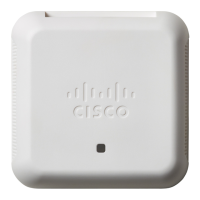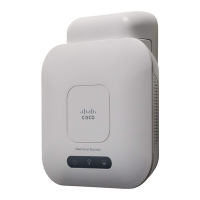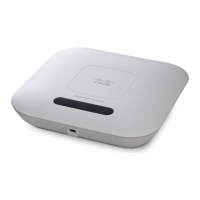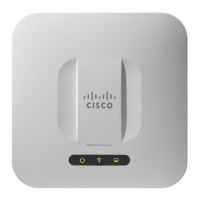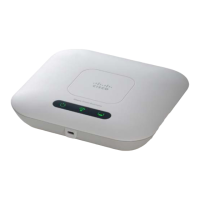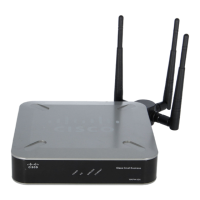Wireless
Radio
Cisco WAP131 and WAP351 Administration Guide 75
5
STEP 3 In the Radio Setting Per Interface area, select the radio interface to which the
configuration parameters will be applied.
STEP 4 In the Basic Settings area, configure these parameters for the selected radio
interface:
NOTE Local regulations may prohibit the use of certain radio modes. Not all modes are
available in all countries.
• Radio—Turns on or off the radio interface. By default, the radio is off.
• MAC Address—Shows the Media Access Control (MAC) address for the
interface. The MAC address is assigned by the manufacturer and cannot be
changed.
• Mode—Choose the IEEE 802.11 standard and frequency that the radio uses.
The available modes are:
- 802.11a—Only 802.11a clients can connect to the WAP device.
- 802.11b/g—802.11b and 802.11g clients can connect to the WAP
device.
- 802.11a/n—802.11a clients and 802.11n clients operating in the 5-GHz
frequency can connect to the WAP device.
- 802.11b/g/n (default)—802.11b, 802.11g, and 802.11n clients operating
in the 2.4-GHz frequency can connect to the WAP device.
- 5 GHz 802.11n—Only 802.11n clients operating in the 5-GHz frequency
can connect to the WAP device.
- 2.4 GHz 802.11n—Only 802.11n clients operating in the 2.4-GHz
frequency can connect to the WAP device.
• Channel Bandwidth—The 802.11n specification allows a coexisting 20/40
MHz channel in addition to the legacy 20 MHz channel available with other
modes. The 20/40 MHz channel enables higher data rates but leaves fewer
channels available for use by other 2.4 GHz and 5 GHz devices.
By default, when the radio mode includes 802.11n, the channel bandwidth is
set to 20 MHz for 2.4 GHz and 20/40 MHz for 5 GHz.
• Primary Channel (802.11n modes with 20/40 MHz bandwidth only)—A 40
MHz channel can be considered to consist of two 20-MHz channels that are
contiguous in the frequency domain. These two 20-MHz channels are often

